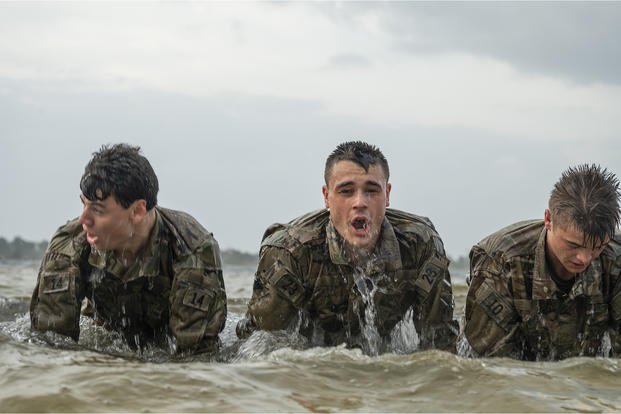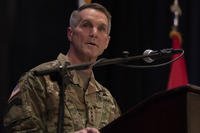Special tactics officers (STO) can become career officers of Group Command level and beyond. They have the honor to lead and manage some of the most dedicated professionals in the challenging Air Force Special Operations community: combat controllers (CCT), pararescuemen (PJs) and tactical air control specialists (TACP).
Special tactics officers are designated combat forces who work directly for Air Force Special Operations Command (AFSOC). STO's specialize in controlling combat search and rescue/personnel recovery, battlefield trauma care and fire support air assets for special operations. STO's are not PJs or CCTs, but they lead the Special Operations squadrons and groups and thoroughly understand how to conduct, manage and provide these Special Operations missions to both conventional and joint special operations missions needed within Joint Special Operations Command (JSOC) and Special Operations Command (SOCOM).
Duties of the Special Tactics Officer
- Plans and directs personnel rescue, SERE (survival, evasion, resistance and escape) and combat air control missions, and supports joint and combined air, ground, and military conventional and special operations.
- Coordinates, plans and conducts assault zone reconnaissance and aerospace interface control in objective areas.
- Conducts reconnaissance, surveillance and assess potential objective airfields and assault zones.
- Provides air traffic control (ATC) services for joint and combined operations.
- Ensures safe air traffic flow at ground terminal area by removing obstacles or unexploded ordnance with demolitions and providing an operational interface between air and ground assets and troops.
ST forces provide a unique capability and deploy with air, ground and maritime forces in the execution of the following Special Operations missions:
Direct action
Combating terrorism
Foreign internal defense
Unconventional warfare
Humanitarian assistance
Coalition support
Counter-drug
Combat search and rescue
Special reconnaissance missions
STO's and PT personnel operate in all climates, day or night, and maintain the highest standards of physical fitness and proficiency in the use of light weapons.
The STO Physical Ability Stamina Test ( PAST)
You must complete the minimum number of exercises, and run and swim within the times specified below. STO selection is extremely competitive; you should give your very best effort, which should be well beyond the minimums.
Calisthenics: The following exercises for full time limit or until muscle failure
Minimums: Chin/pull-ups in one minute (12) Sit-ups in two minutes (75) Push-ups in two minutes (64) Run: Three miles nonstop completed within 22 minutes. Underwater swim: Swim and remain underwater for 25 meters Swim: 1,500 meters nonstop -- any stroke except backstroke (no fins) within 32 minutesSpecial Tactics Officer Training Pipeline
STOs receive the same initial training as enlisted combat controllers, a process that takes approximately 8-10 months, followed by 12 months of advanced skills training (AST). Training consists of these eight schools
Combat Control Orientation Course Combat Control Operator/Air Traffic Control Officer Course Air Force Basic Combat Survival School U.S. Army Airborne School Combat Control School Advanced Skills Training Combat Diver Course Military freefall parachutist qualification courseThose eligible to be a special tactics officer must be a current active-duty officer, cadet or enlisted personnel with officer training school (OTS) and positive Special Tactics officer selection. There are no civilian to STO recruiting programs at this time. You must become an Air Force officer, then request a release from your chosen career field to initiate a valid selection package.
Security clearance: Able to obtain a top secret clearance.
Volunteer: Must be a male volunteer for hazardous military duties to consist of parachuting (static line and freefall), marine diving (surface and underwater operations), and mission aircrew with retention time of six years.
Background: Outstanding resume and no negative personal history.
Medical: USAF Class III Flight physical.
The Selection Process
The selection program is a two-phase process, consisting of Phase I -- board review of the application -- and Phase II, a one-week field evaluation. The selection process screens an applicant for mental fortitude and physical capabilities, while preparing officers for future duties as a STO. This program reduces the training attrition rate by ensuring that officers selected are equipped to succeed in the specific mental and physical challenges of the STO training pipeline.
Want to Know More About the Military?
Be sure to get the latest news about the U.S. military, as well as critical info about how to join and all the benefits of service. Subscribe to Military.com and receive customized updates delivered straight to your inbox.












